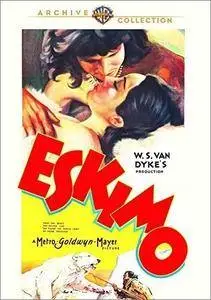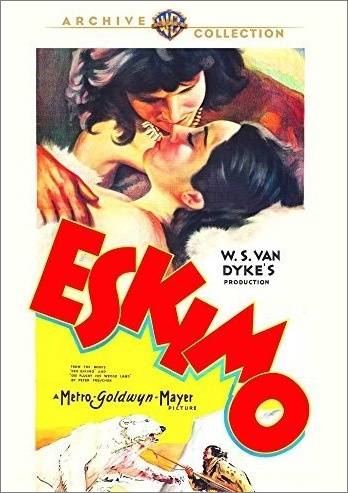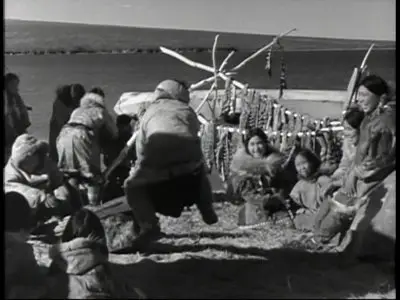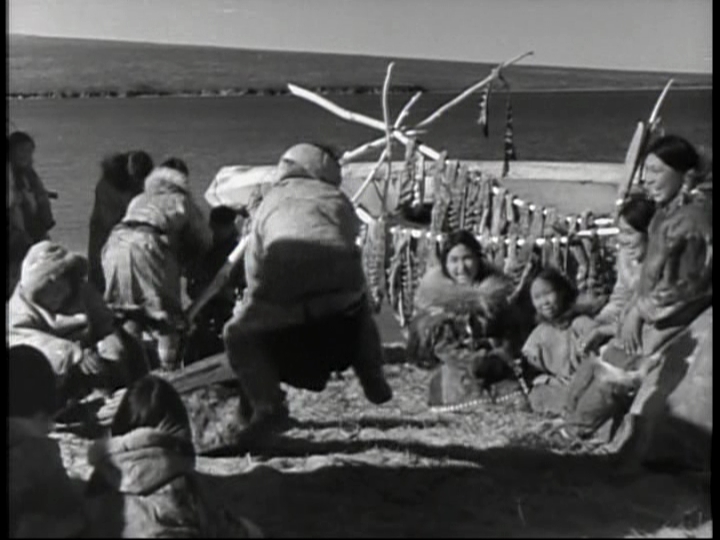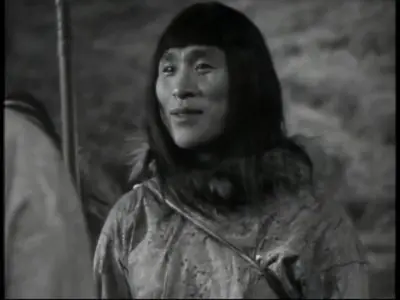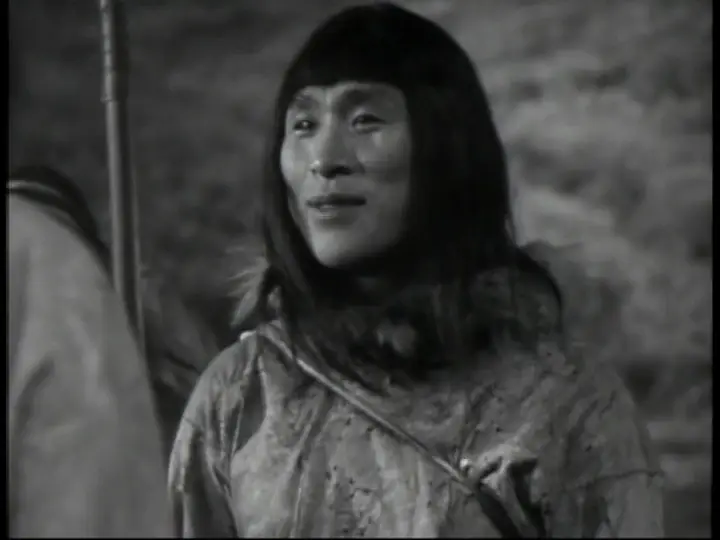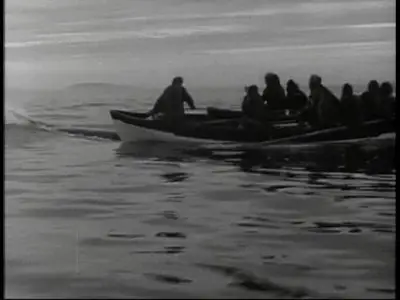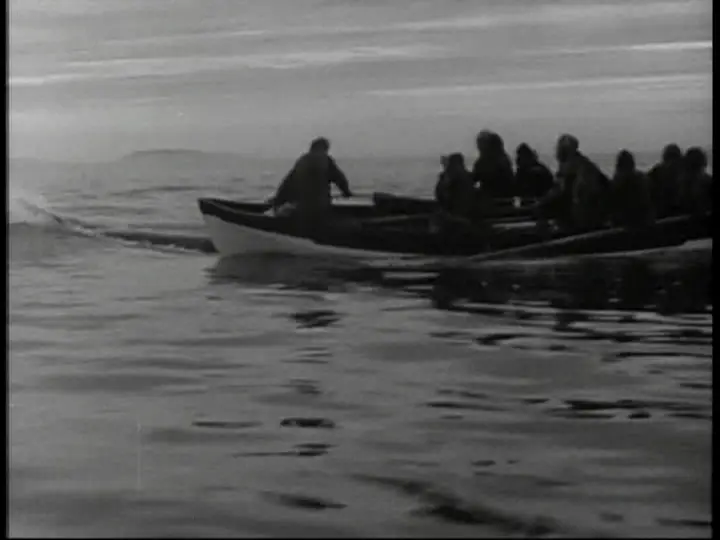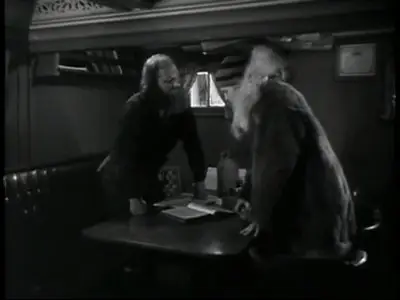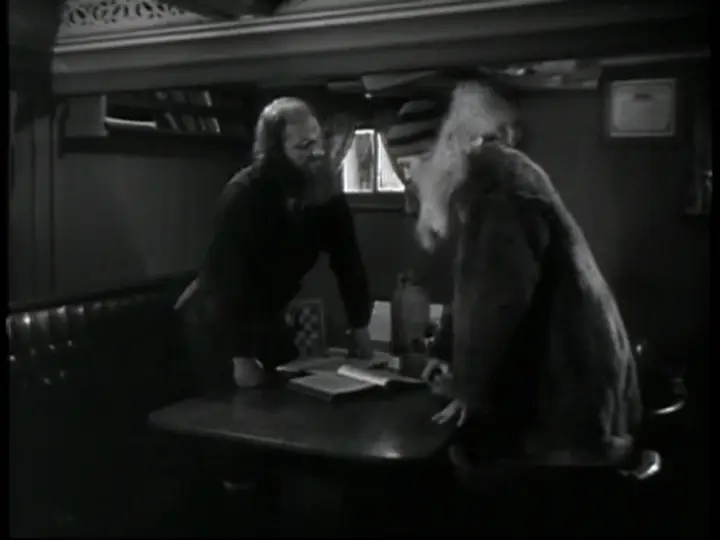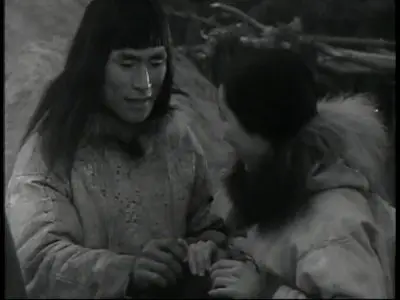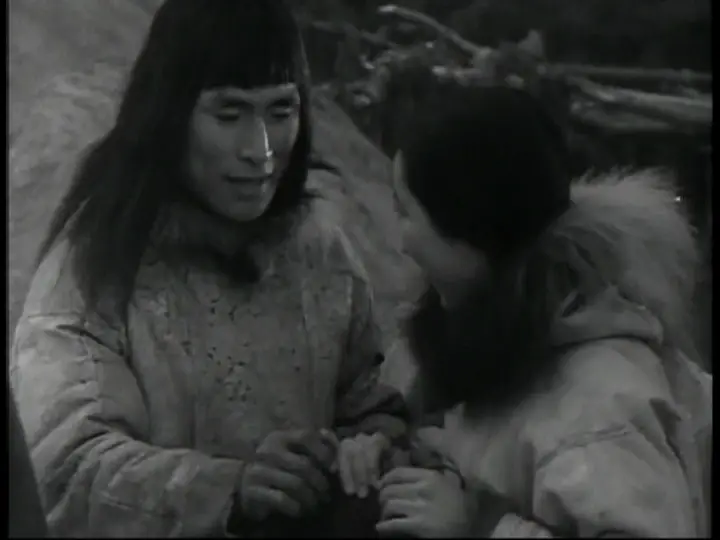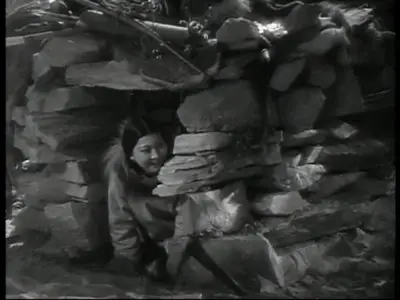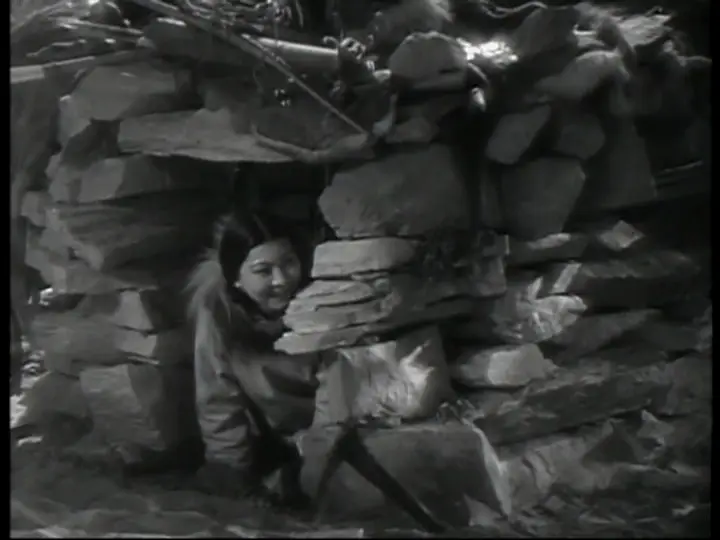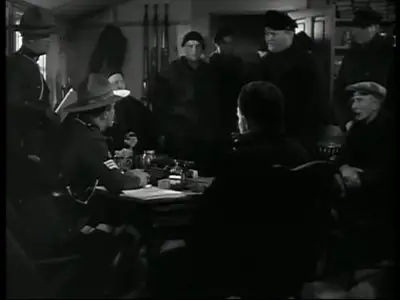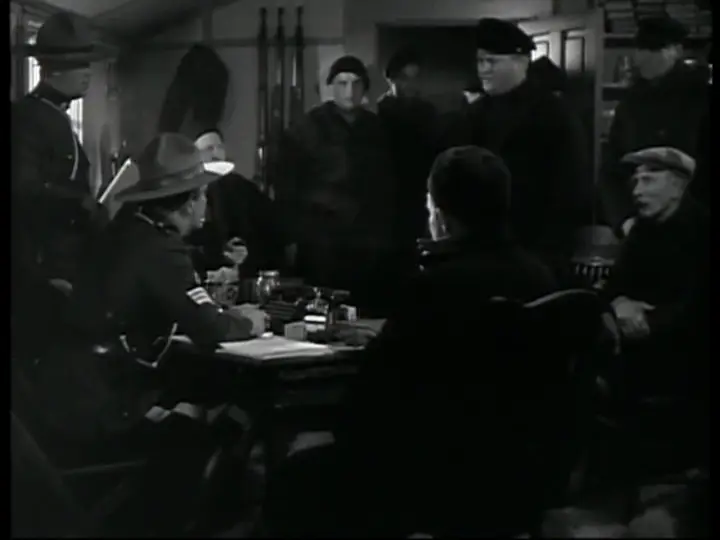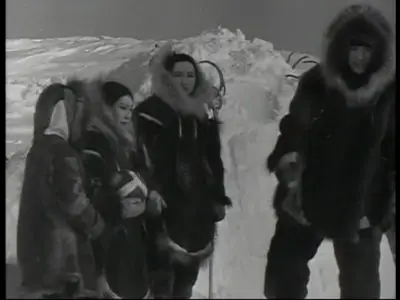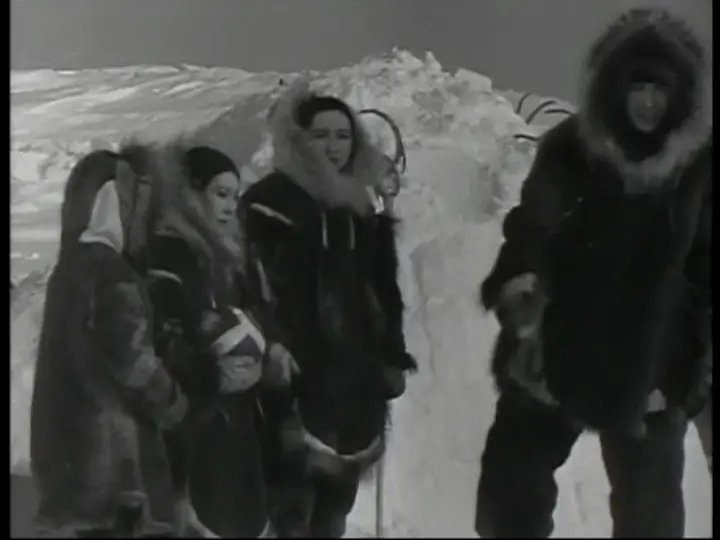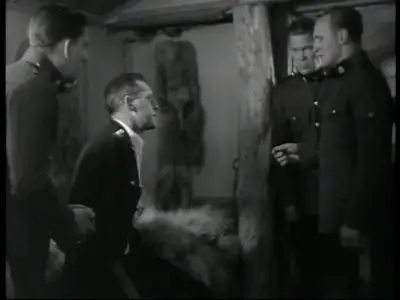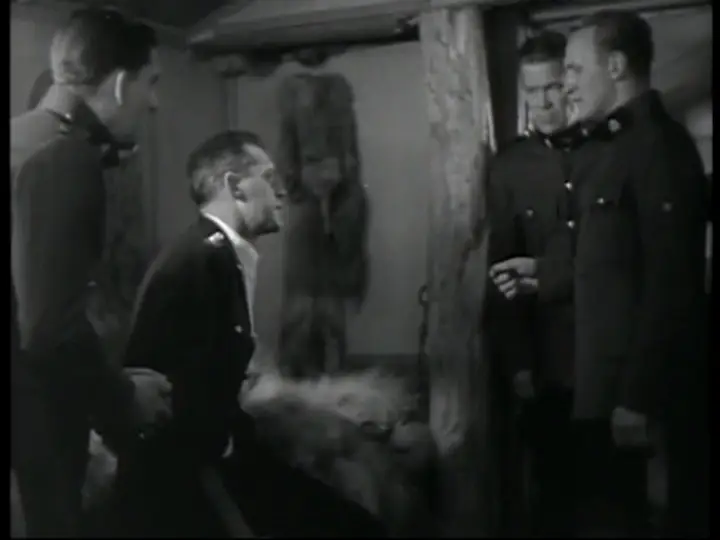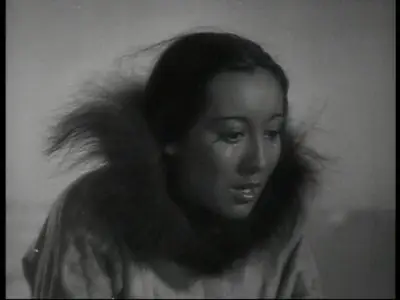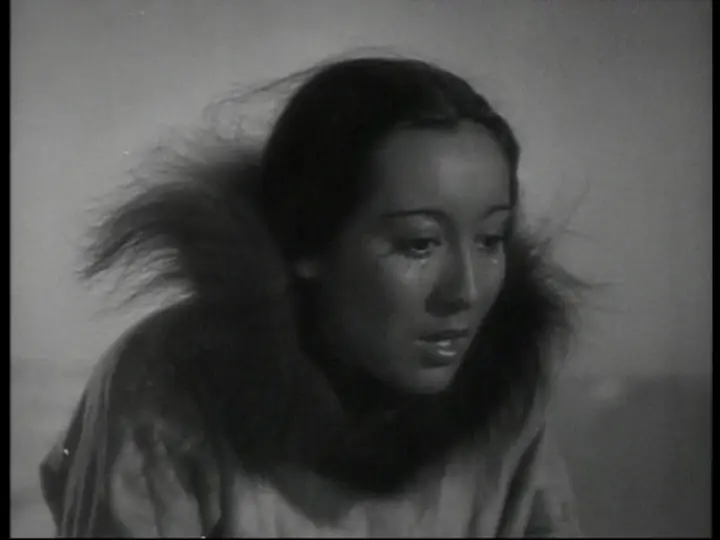Eskimo (1933)
DVD5 | VIDEO_TS | NTSC 4:3 | 01:53:23 | 3,74 Gb
Score AC3 2.0 @ 256 Kbps with English intertitles
Genre: Drama, Classics
DVD5 | VIDEO_TS | NTSC 4:3 | 01:53:23 | 3,74 Gb
Score AC3 2.0 @ 256 Kbps with English intertitles
Genre: Drama, Classics
Director: W.S. Van Dyke
Stars: Edgar Dearing, Peter Freuchen, Edward Hearn
Mala lives quiet in its village of Alaska. But of the White arrive and sow the disturbance. One of them rapes and kills his wife. Mala is avenged and had to flee to escape from the law from the White.
In the Canadian Arctic, a proud Eskimo hunter known as Mala travels over 500 miles across the frozen tundra with his wife and family. Their destination is Tjarnak where Mala plans to trade furs for man-made necessities with the captain of a whaling expedition. Eventually they reach the white man's outpost where Mala conducts a successful trade, but the ship's captain proves to be a treacherous character who brings nothing but misfortune, shame and tragedy to the Eskimos.
W. S. Van Dyke made a name for himself at MGM in the late twenties as a director whose forte was making dramatic adventure stories enhanced by exotic documentary footage using real locations and local natives. His 1929 feature, White Shadows in the South Seas enjoyed considerable controversy at the time because the original director, documentarian Robert Flaherty, was fired midway through production after constantly clashing with studio executives over the film's original intent. Van Dyke stepped in to complete the film, transforming Flaherty's ethnographic study of the Marquesas Islands in the South Pacific into a scenic melodrama about a alcoholic doctor (Monte Blue) and his love for a native girl (Raquel Torres). Despite the on-location production problems on White Shadows in the South Seas, Van Dyke headed back to the South Seas to film The Pagan with Ramon Novarro in 1929. Then, in 1930, the director traveled with a cast and crew to Africa to shoot Trader Horn (1931) which was also plagued by bad luck and accidents; the sound equipment truck became submerged in a river, the female lead, Edwina Booth, fell ill in the tropical heat, and Harry Carey, the hero of the film, almost lost his leg to a crocodile. Van Dyke was later able to recycle some of his African jungle footage for Tarzan, the Ape Man (1932), the first in a long line of Edgar Rice Burroughs adaptations starring Johnny Weissmuller.
In 1932, Van Dyke set out to make Eskimo (1933), hyped by MGM as his most ambitious project to date. It was no less arduous to film than his previous expeditions to some of the world's most remote locales. Taking a camera crew to the northern tip of Alaska, Van Dyke arrived at his shooting location during the winter of 1932-33. Weather conditions were harsh and Van Dyke's ship was soon rendered immobile by the heavy ice. Luckily, their guide, Peter Freuchen (his many books on Eskimo culture served as the basis for John Lee Mahin's screenplay), helped the crew deal with the local natives and capture some stunning landscapes and hunting footage involving walrus, caribou and a polar bear. At times Eskimo resembles a documentary with its remarkable scenes of salmon spear fishing or husky sled-teams traveling across the ice. Also adding a sense of authenticity was Van Dyke's insistence on having all of the Eskimos speak in their own dialect, which is often translated on-screen via subtitles or a narrator.
Eskimo does not open with standard movie credits. Instead, it has an introduction stating that no actors were used in the film (except for the roles of the white traders and the Royal Mounted Canadian Police). Despite Van Dyke's claim that all of the Eskimos were played by tribal people from the Arctic region, Mala and Lotus Long, cast respectively as Mala and Iva (one of Mala's wives in the film), were actually professional actors. Mala, in fact, would go on to enjoy a successful Hollywood career, playing variations on his innocent native in Last of the Pagans (1935), Call of the Yukon (1938), and The Tuttles of Tahiti (1942).
Unfortunately, Eskimo was not a success at the box office. Perhaps moviegoers at the time didn't have the same curiosity about the Arctic that they did about the Pacific Rim or Africa. But most likely it was the depressing storyline that discouraged ticket buyers. Though it occasionally veers off into melodramatic excess, Eskimo is an often powerful indictment of white civilization and its destructive impact on indigenous cultures. Mala's performance as the victimized main character is genuinely moving and the film has a classic structure not unlike the great stage tragedies of Shakespeare. Despite favorable reviews, Eskimo was overlooked at Oscar time, except in one category - Best Film Editing - for which it won an Academy Award.
The arrival of White Men in Arctic Canada challenges the freedom of a fearless ESKIMO hunter.
W. S. Van Dyke, MGM's peripatetic director, was responsible for this fascinating look at life in the Arctic among the Inuit. His production was on location filming from April 1932 until November 1933 (although some annoying rear projection effects show that some of the shooting took place back at the Studio). While considered a documentary at the time, we would likely term it a 'docudrama' as it is scripted with an intriguing plot & storyline.
The film shows the daily life of the Eskimo, both Winter & Summer, and in fact starts in the warmer time of the year without any snow or ice in sight. The constant striving for food is depicted, and the viewer gets to watch the exciting hunts for walrus, polar bear, whale & caribou. The native language is used throughout, with the use of title cards; the only English is spoken by the fishermen & Mounties encountered by the Eskimo. In fact, it is the arrival of White Men, both good & bad, and the change they make on Eskimo society, which is a major element in the narrative.
This Pre-Code film deals in a refreshingly frank manner with the Eskimo moral code, particularly with their practice of wife-sharing, which was an important and completely innocent part of their culture. In fact, the entire film can be appreciated as a valuable look at a way of life which was rapidly disappearing even in the early 1930's.
None of the cast receives screen credit, which is a shame as there are some notable performances. Foremost among them is that of Ray Wise, playing the leading role of Mala the Eskimo. Wise (1906-1952) was an Alaskan Native of Inuit ancestry and is absolutely splendid and perfectly believable in what was a very demanding part. As handsome as any Hollywood star, he would continue acting, using the name of Ray Mala, in a sporadic film career, often in tiny unbilled roles.
Lovely Japanese-Hawaiian actress Lotus Long plays Mala's loyal second wife; the names of the fine actresses playing his other two wives are now obscure. Director Woody Van Dyke steps in front of the cameras as a strict North West Mounted Police inspector. The two decent-hearted Mounties who must deliver Mala to Canadian justice are played by Joe Sawyer & Edgar Dearing, both longtime movie character actors. Danish author Peter Freuchen, upon whose books the film was based, has a short vivid role of an evil wooden-legged sea captain who unwisely rouses Mala's icy wrath.IMDB Reviewer
Special Features: None
All Credits goes to Original uploader.


